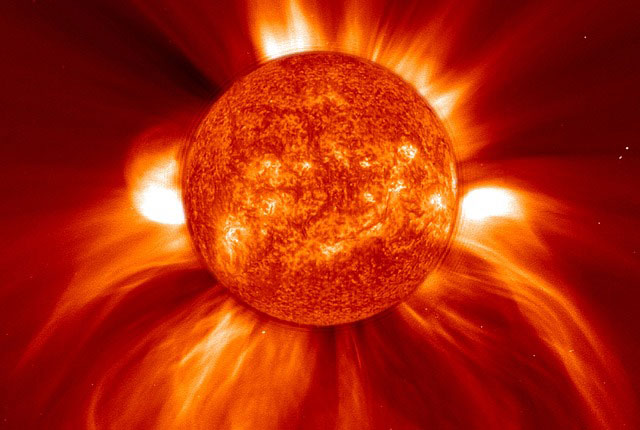
The sun is the most enviable source of energy.
We are all alive because of the heat and light coming from this gigantic star.
So great is the sun’s power that the amount of energy that it emits in 15 minutes is already equivalent to the total amount of all forms of energy that the world consumes in a year.
If we could only closely replicate the sun’s energy production, mankind would have massive amounts of sustainable, clean energy and no longer have to rely on fossil fuels.
But now, it does seem that this idea is coming closer and closer to fruition!
Yes, there’s another breakthrough in nuclear fusion which has been accomplished by a team of researchers at the Massachusetts Institute of Technology (MIT). By adding a third ion to the conventional two-ion plasma production, the team was able to come up with 10x more efficient way of extracting energy from the fusion of atoms.
In the case of the sun, it produces energy by converting hydrogen atoms into nuclei of helium. The fusion results in energy in the form of gamma rays (electromagnetic radiation) or kinetic energy from the amazing nuclear reaction.
Since the huge mass of the sun is about 73 per cent hydrogen, 25 per cent helium with other chemical elements like oxygen, carbon and nitrogen making up the rest, you can just imagine how much power continuously churns inside its core.
No solid or liquid can ever exist in the sun, only plasma (the fourth state of matter).
For years, scientists have been endeavoring to replicate this process. However, there were a lot of serious challenges needing to be resolved. One of these was how to contain the ultra-hot plasma. It could vaporize almost anything.
Then, in 1985, mankind was able to come up with a plan for large-scale production of fusion-based energy through the use of a magnetic fusion device called ‘tokamak’.
Tokamak is a 1950’s invention of Soviet physicists Igor Tamm and Andrei Sakharov. It originated from the idea of Oleg Lavrentiev, another Russian physicist. It’s a magnetic confinement system that can hold plasma securely.
Scientists and engineers from different countries have gathered together to design the world’s biggest tokamak. Its objective is to prove the viability of nuclear fusion as a large-scale, carbon-free energy source.
The international project is known as ITER, meaning “The Way” in Latin.
Thirty-five countries are currently in close collaboration to build ITER tokamak in Saint Paul-lez-Durance, southern France. It aims to pave the way for tomorrow’s fusion power plants, which will provide major populations with clean and reliable energy.
The ITER tokamak is being built in such a large-scale since, according to scientific experts, “the bigger the container, the bigger the volume of plasma — and the greater the potential for fusion energy”. Their target is to produce 500 MV of fusion power from 50 MW of input power.
And now, MIT researchers have proven that 10x energy could really be extracted from a small amount of fusion. Using MIT’s Alcator C-Mod tokamak, the researchers added one per cent helium-3 to the traditional 2-ion plasma mix which is usually composed of 95 per cent deuterium ions (proton plus neutron) and 5 per cent hydrogen ions (protons).
This resulted to a ten-fold increase in energy production.
“These higher energy ranges are in the same range as activated fusion products,” remarks John C. Wright, a researcher from MIT’s Plasma Science and Fusion Center. “To be able to create such energetic ions in a non-activated device – not doing a huge amount of fusion – is beneficial, because we can study how ions with energies comparable to fusion reaction products behave, how well they would be confined.”
So inspiring was MIT success that researchers at the Joint European Torus (JET) replicated the experiment.
Are we now really close to solving the world’s problem with energy?
It may take some years yet to perfect fusion reactors to make sure that they would not in any way negatively impact the environment. However, the world now seems to have a brighter future for cleaner and sustainable energy. And let’s be objective here. If we want to minimize our impact on the planet, we can no longer keep burning fossil fuel and still pretend to somehow have a stable and safe climate. As Monica Araya, executive director at Nivela, a Costa Rica-based environmental group, told The Huffington Post back in 2015: “The world will need to leave fossil fuels behind if we are to achieve climate security this century.”




Leave a Reply